Discouraged about the high cost of summer travel? You don’t need to go somewhere expensive or far-flung to have that perfect summer vacation. There’s plenty to see and do right here in the U.S., starting with state parks.
More than 10,000 state parks extend across millions of acres of land around the U.S. Compared to just 423 national parks, there’s likely a state park within striking distance of your home, no matter where you reside. We’re not saying you should skip a national park visit. However, if you’re looking for an accessible summer trip, state parks are often less expensive, less crowded and delightfully underrated.
With thousands of state parks to choose from, it can be hard to narrow the options.
While favorites are always subjective, there are those special places which leave a lasting impression on all who visit. We spoke with local residents, outdoor enthusiasts and frequent travelers in each and every state to curate TPG’s list of the best state parks in all 50 states.
Here are our top picks of the greatest natural wonders the U.S. offers, one state park at a time.
For more TPG news delivered each morning to your inbox, sign up for our daily newsletter.
In This Post
Alabama—California
Alabama: Desoto State Park
This natural haven is on Lookout Mountain. DeSoto State Park‘s claim to fame is DeSoto Falls, where rushing water has chiseled out its very own small canyon. Visitors can hike, cycle, kayak, swim, picnic, rappel, fish and hike in the park. DeSoto isn’t just for summer visits, either. It’s just as beautiful in fall when the leaves change color, or in late spring when wildflowers are in bloom.
Must see: The one-and-a-half mile Orange Trail, which weaves around the lesser-visited cascades like Lost Falls and Laurel Falls.
Alaska: Denali State Park
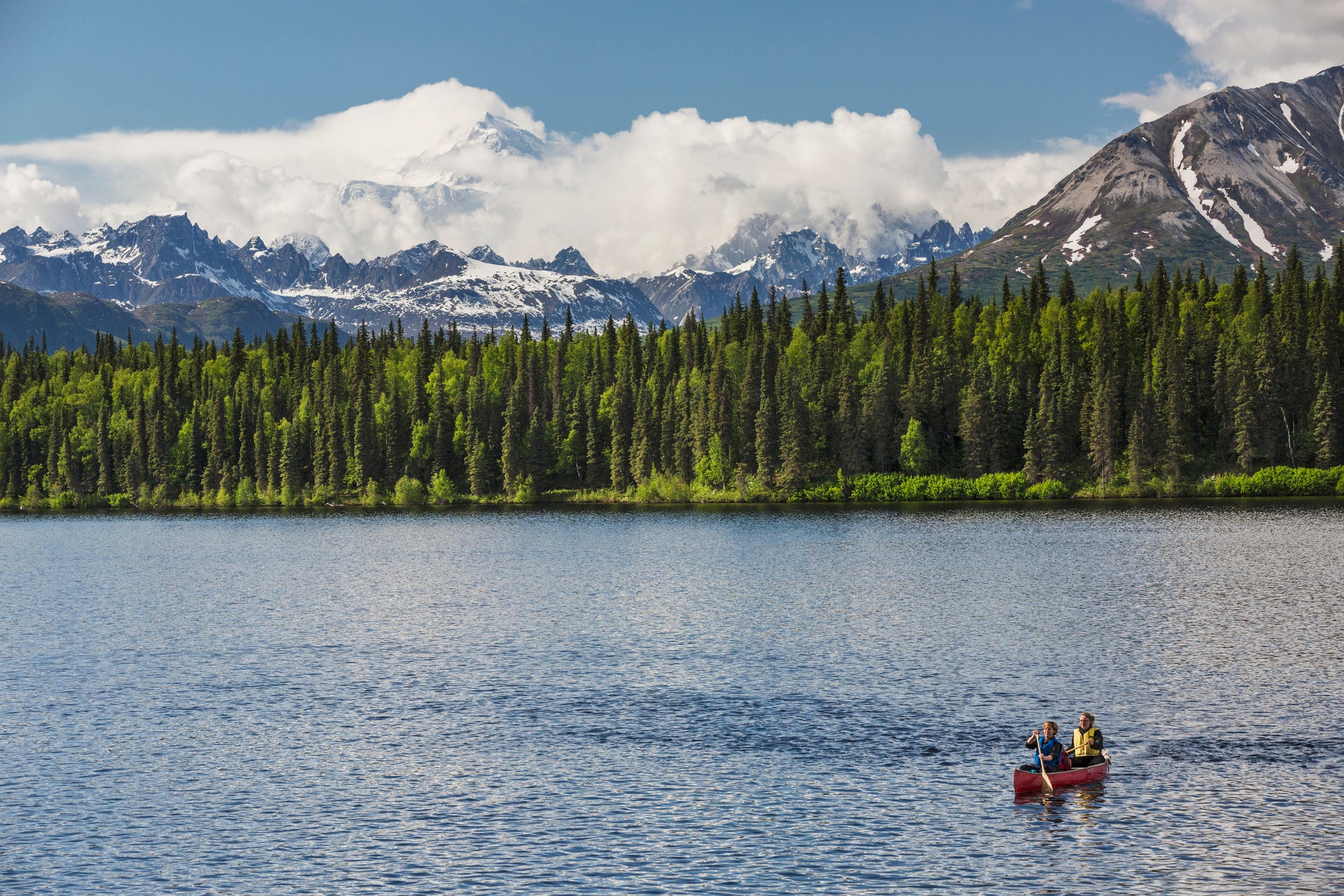
Not to be confused with Denali National Park, Denali State Park spans more than 300,00 acres, about half the size of Rhode Island. It’s almost entirely made up of pure, rugged wilderness, save for a couple of trailheads, two recreational areas and three campgrounds. Expect to see wildlife such as elk, moose, marmots, deer and even brown and black bears. The park is a paradise for hikers, but you can also drive through it, or take a guided kayaking trip.
Must see: The Tokositna Flats Winter Trail, which you can explore by dog sled during the winter months.
Related: These are the best times to visit Alaska
Arizona: Slide Rock State Park
Arizona has no shortage of spectacular scenery, but Slide Rock’s smooth red rocks and sandstone bluffs in Oak Creek Canyon are ideal for summer treks and trout fishing in the park’s designated stream. Combine a visit to Slide Rock State Park with stops in nearby Sedona (15 minutes) and Flagstaff (40 minutes) or the Grand Canyon (two hours).
Must see: The 80-foot-long Slide Rock Waterslide, where you can slide down the refreshingly cold waters. The walk to the slide is short and simple, but the park does have longer trails for those so inclined.
Arkansas: Cane Creek State Park
For those who want to experience a few different types of landscapes, Cane Creek State Park is the place to go. It’s where the Mississippi Delta and the Coastal Plains meet, meaning visitors can enjoy the park both on water and on land. Boat, kayak and canoe rentals are the best way to cruise through the swampy mangroves of the Delta on a water trail. Back ashore, bike or hike through some of the state’s top trails.
Must see: The Cane Creek Lake Trail on foot or by bike, which crosses the park’s three iconic suspension bridges.
California: Torrey Pines State Natural Reserve
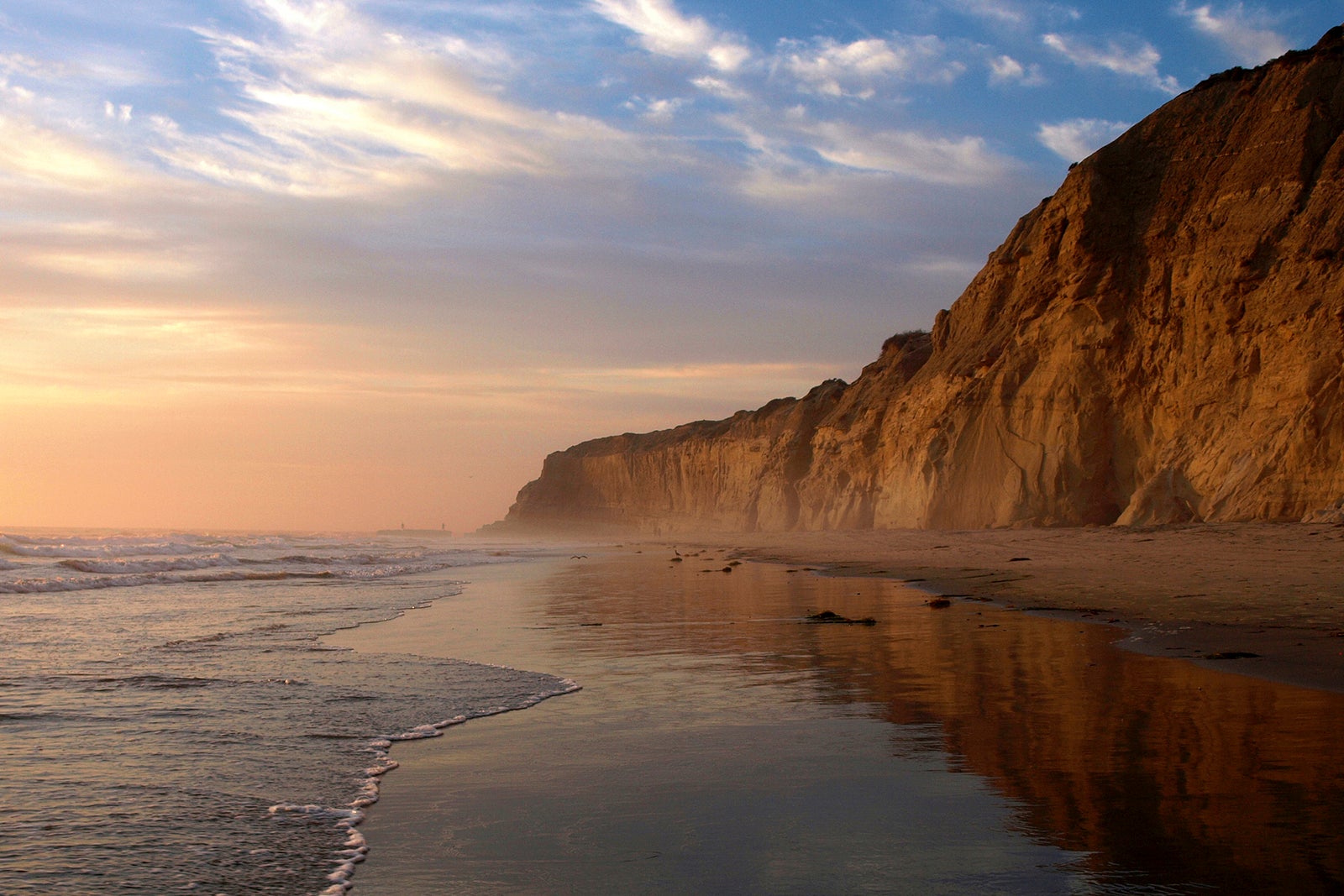
This 2,000-acre park is where California’s dynamic natural wonders meet the sea. Visitors can hike up cliffs, through fields of wildflowers, over natural marshes and past some of the nation’s rarest pine trees: Pinus torreyana. Thanks to southern California’s mild weather, you can visit Torrey Pines State Natural Reserve (which is just outside San Diego) year-round.
Must see: Torrey Pines State Beach, a picturesque beach backed by rocky cliffs.
Related: California trips for every traveler
Colorado—Georgia
Colorado: Eldorado Canyon State Park
Serious climbers should head to Eldorado Canyon State Park, where they can climb and rappel on sandstone cliffs — some up to 700 feet high. Rocks are craggy and irregular, so beginners shouldn’t attempt to climb in this park; it’s best for experienced climbers. Alternative activities include hiking, fishing, horseback riding, hunting (with the right permits) and even cross-country skiing in the winter months.
Must see: The intricate three-mile-long Rattlesnake Gulch Bike Trail for epic views of Eldorado Canyon and the Continental Divide.
Connecticut: Devil’s Hopyard State Park
No one really knows why perfectly cylindrical pothole stones are scattered throughout Devil’s Hopyard State Park, though legend has it that the Devil himself passed through the waterfalls and got his tail wet so he burned holes in the stones. Fables aside, the Scotland Schist stones that line the park’s 60-foot-high Chapman Falls are decidedly unique. Park visitors can climb and scramble over various types of pegmatite rock and boulders, as well as enjoy fishing, bird watching, camping and hiking at this state natural destination.
Must see: The two-mile-long Orange Loop Trail, which passes by the famous covered bridge (one of a few historic bridges in the park) for incredible views of the park’s one-of-a-kind landscape.
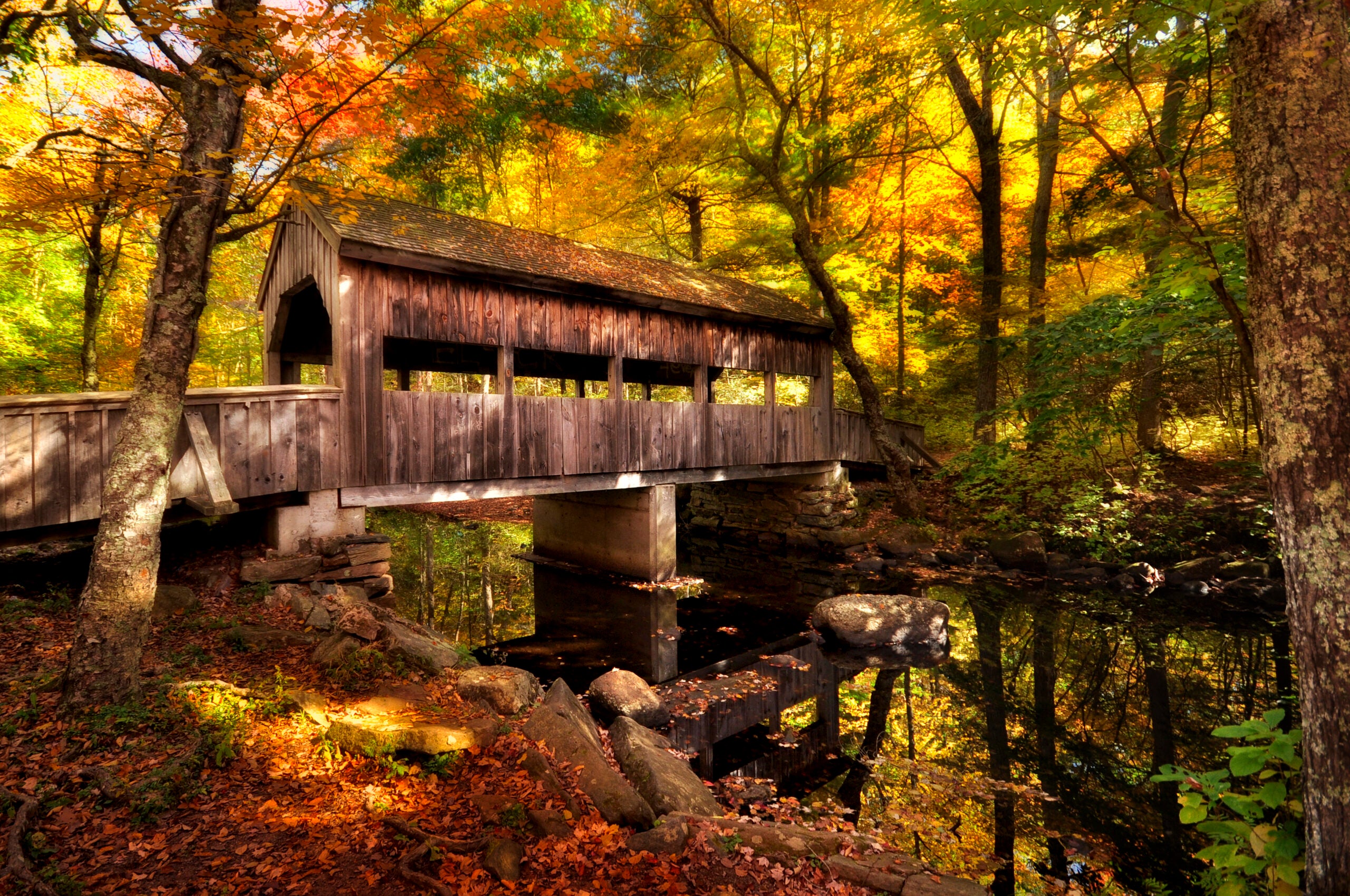
Delaware: Lums Pond State Park
Built surrounding one of Delaware’s largest freshwater ponds, Lums Pond State Park is a marsh-like retreat known for having a number of different dragonfly species. Visitors can hike or stroll through the park and around the lake, as well as canoe, paddleboat or kayak on the pond itself. There’s also a Treetop Course for ziplining.
Must see: The Swamp Forest Trail (just over six miles long) circles the pond and takes you through hardwood forest and swampy wetlands.
Florida: Cayo Costa State Park
The Cayo Costa State Park is a barrier island off Fort Myers and the Florida Gulf coasts. It’s accessible by ferry, boat or kayak from nearby Pine Island, Captiva Island or Punta Gorda. The park’s claim to fame is its nine-mile-long stretch of wild, white sand, though it’s also ideal for active travelers who want to swim, fish, snorkel or bird-watch.
Must see: The dolphins, porpoises, manatees and sea turtles visitors can often spot from the shore.
Related: The best beaches in Florida
Georgia: Vogel State Park
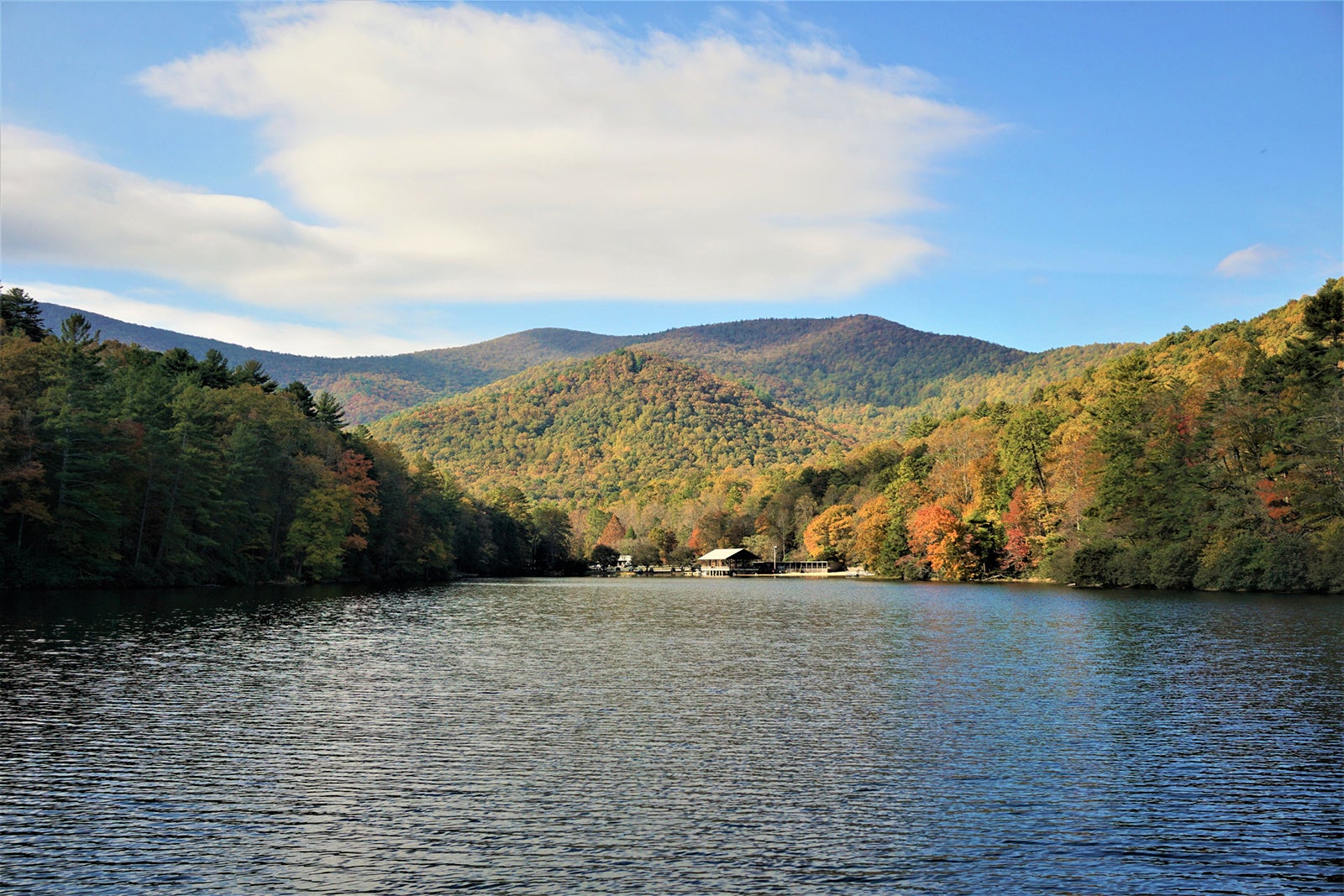
Visit Georgia’s second-oldest state park, Vogel State Park, in autumn to watch the leaves of the trees along the Blue Ridge Mountains change from green to red, gold and orange. The park, which sits at the base of Blood Mountain, offers hiking trails ranging from easy strolls to more difficult treks up to the Appalachian Trail.
Must see: The 22-acre lake, where you can kayak or paddleboard.
Hawaii—Iowa
Hawaii: Waimea Canyon State Park, Kauai
Known as the Grand Canyon of the Pacific, Waimea Canyon State Park is home to Waimea Canyon, thousands of feet deep and vividly colorful thanks to its eroded reddish rocks, rushing waterfalls and lush greenery. You can hike through the park, but visitors can also drive around the canyon, stopping at scenic viewpoints to snap photos and take it all in — just arrive early to avoid fog.
Must see: The challenging Kukui Trail, which plunges deep into the canyon and winds back up again.
Related: The best ways to get to Hawaii on points and miles
Idaho: Thousand Springs State Park
Located in an area deemed “The Magic Valley” for its magical scenery, Thousand Springs State Park comprises six distinct spaces, a short drive apart. From the waterfall at Box Canyon Springs to birdwatching on Ritter Island, it’ll be tough to decide where to start. Not sure? Check out the new 3,400-square-foot Visitor Center at Billingsley Creek for more information.
Must see: Parts of the famed original Oregon Trail, which can be accessed along the Kelton Trail.
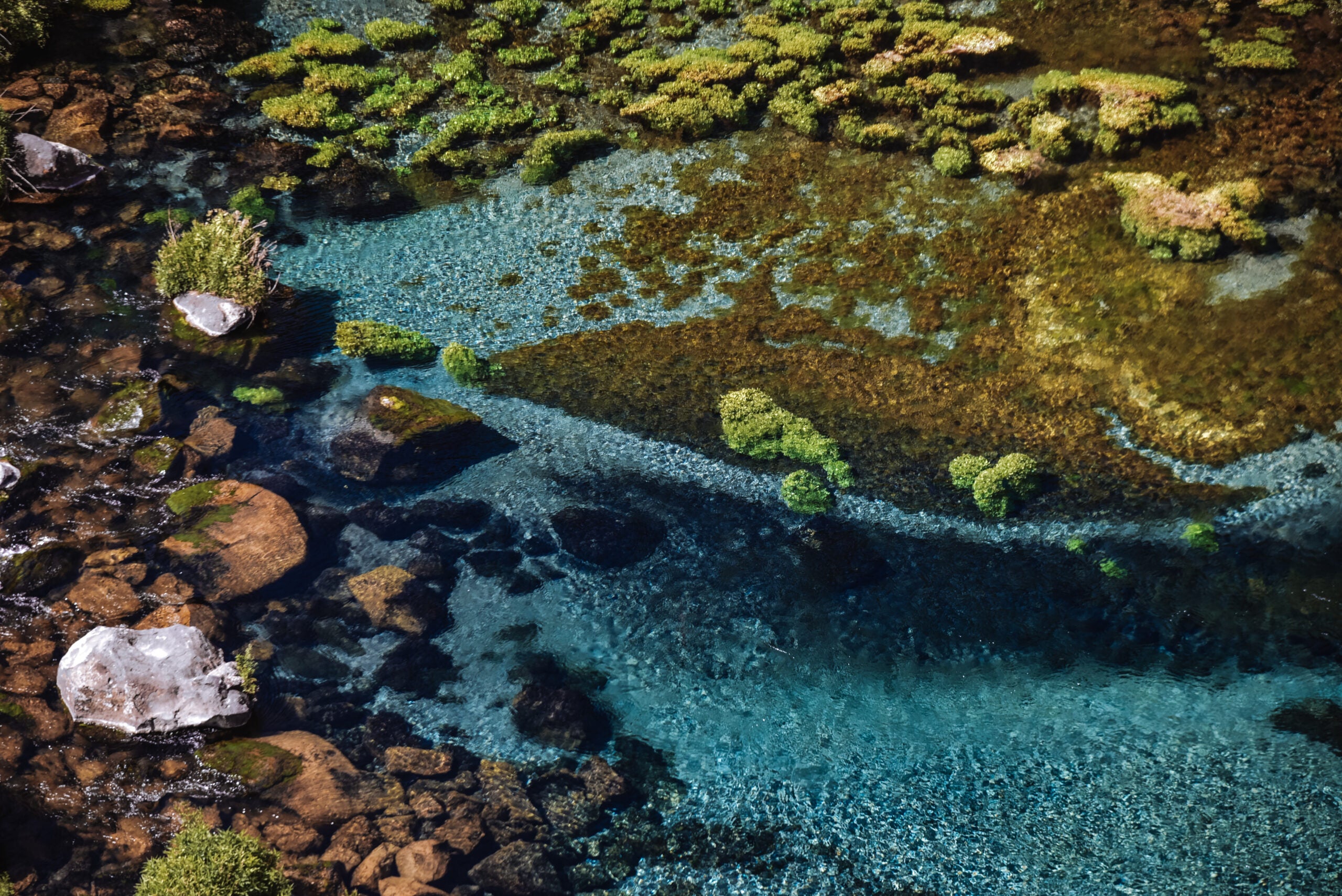
Illinois: Starved Rock State park
Just a couple of hours south of Chicago‘s skyscrapers, Starved Rock State Park’s numerous waterfalls and rugged hiking terrain make for the perfect escape from the Midwest’s more typical mundane landscape. With trails along the Illinois River, visitors can also canoe, fish and even cross country ski in the winter. For those who want to experience the park but aren’t into traditional camping, the recently opened Camp Aramoni features luxury tents and half-board meal options.
Must see: The waterfall at St. Louis Canyon, a one-and-a-half-mile hike away from the Visitors Center — it even forms icicles in winter.
Indiana: Indiana Dunes State Park
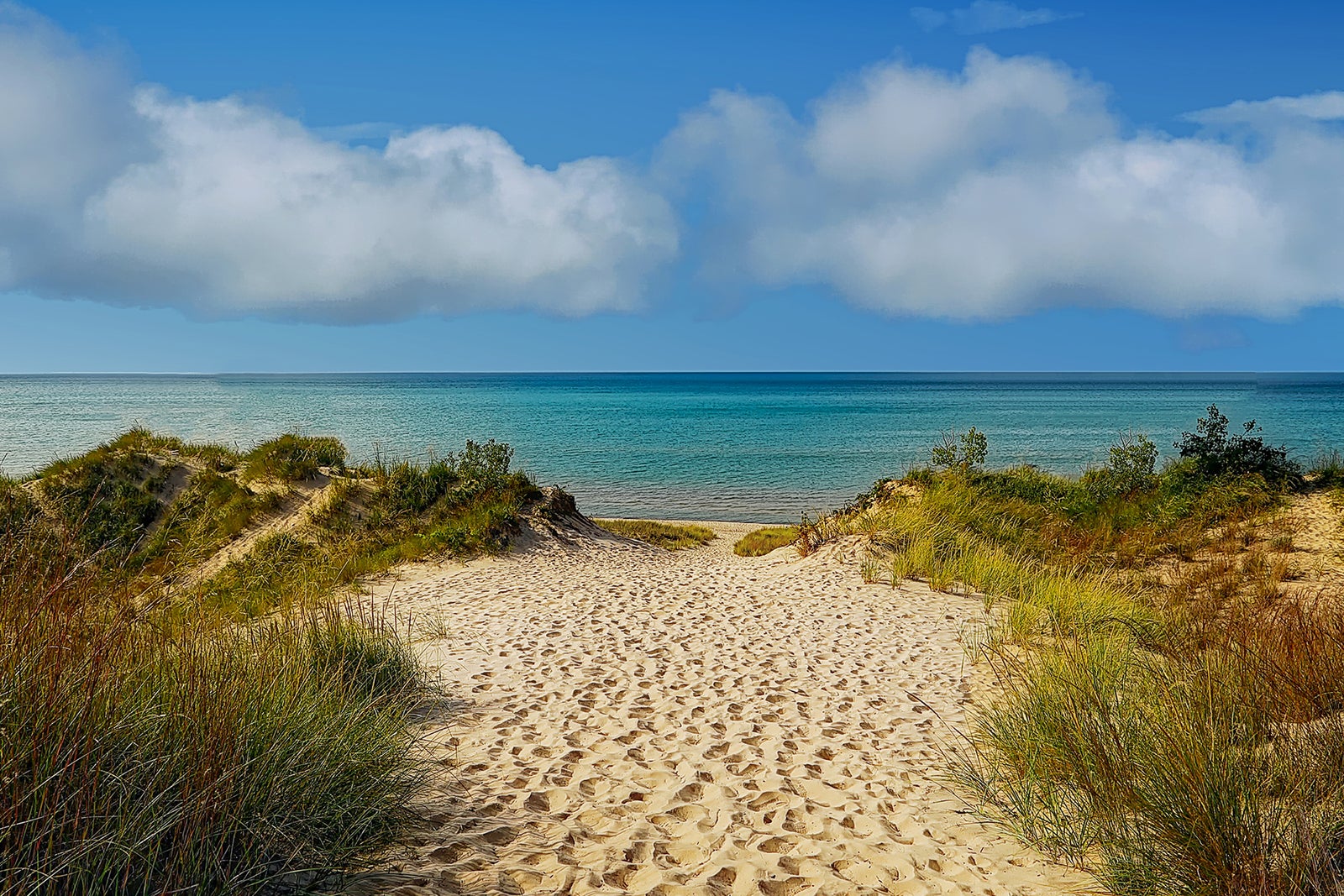
Not to be confused with the Indiana Dunes National Park which actually surrounds this state park, the Indiana Dunes State Park is home to a few miles of shoreline along the southern coast of Lake Michigan. Besides summer swims in the lake and frolicking in the sand dunes, visitors can also hunt, fish, hike and even cross-country ski in this small, historic state park.
Must see: The sunset from the dunes backed by the Chicago skyline in the distance.
Iowa: Pikes Peak State Park
With over 1,000 acres of land ideal for hikers and birdwatchers, Pikes Peak State Park is known for its birdwatching and camping in summer. Visitors can enjoy its forest leaves changing colors during autumn, and even view the park’s bluffs and valleys beneath a covering of crisp, white snow in winter. Nearby, the Effigy Mounds National Monument features more than 200 Native American ceremonial mounds.
Must see: Pikes Peak itself, the park’s 500-foot-high bluff which offers scenic views of the Mississippi and Wisconsin Rivers.
Kansas—Maryland
Kansas: Wilson State Park
Kansas isn’t as flat as you may think. While Wilson State Park doesn’t have super-high peaks, it does offer hilly terrain perfect for cycling, including some rocky cliff formations around the Wilson Reservoir. Walkers should opt for Cedar Trail, an easy one-mile route, for a leisurely stroll. You can fish and swim in certain areas, too.
Must see: The 24.5-mile-long Switchgrass Bike Trail, perfect for cyclists who want a challenge.
Kentucky: Cumberland Falls State Park
Home of the iconic Cumberland Falls, Cumberland Falls State Park is most famous for its 125-foot-wide waterfall — the park is often referred to as the Niagara Falls of the South. It also features 17 miles of hiking trails and offers guided horseback riding.
Must see: The park’s Moonbow waterfall is one of the few places around the U.S. where visitors can witness this rare phenomenon; a type of lunar rainbow formed by water droplets visible on nights when there’s a full moon.
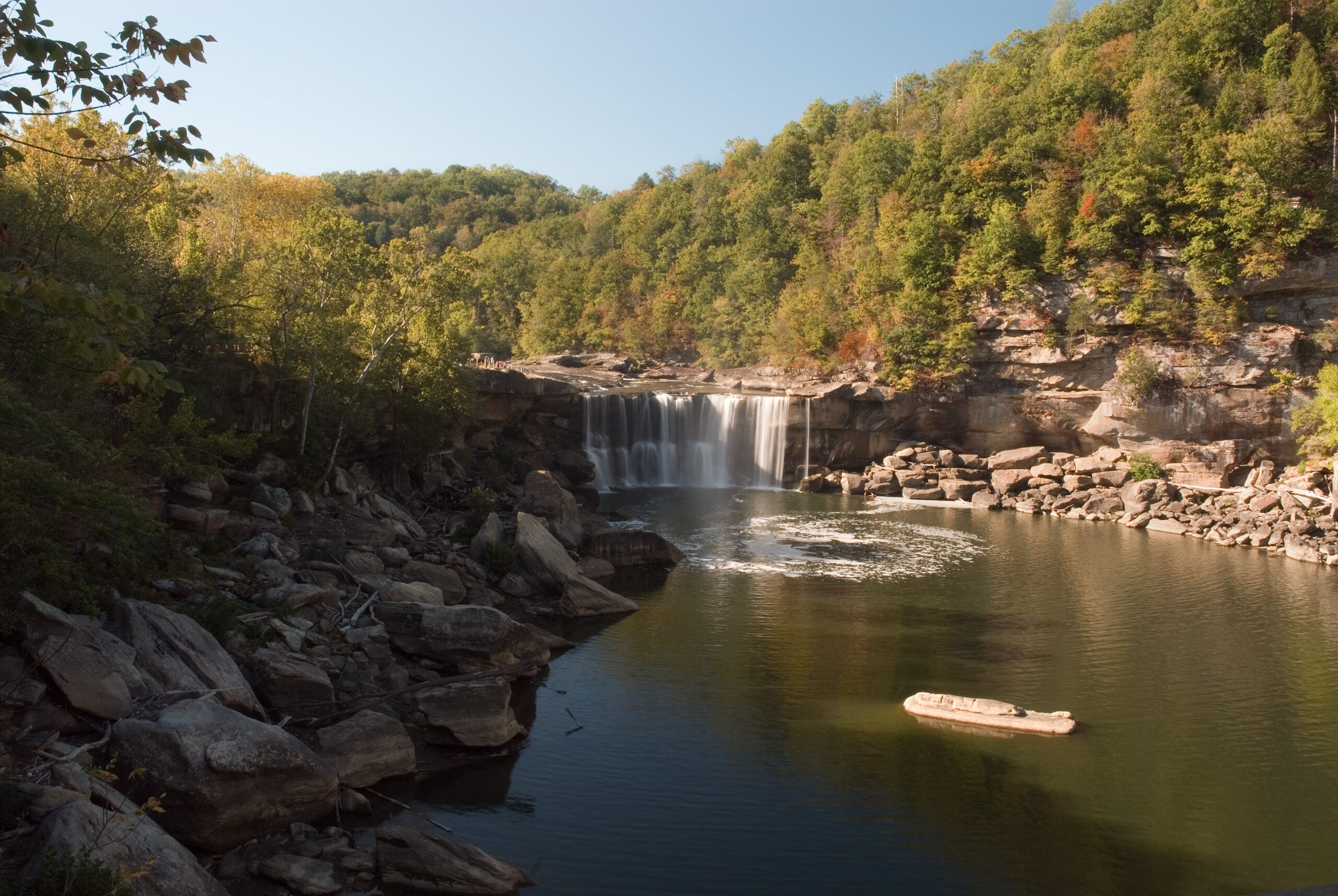
Louisiana: Chicot State Park
Chicot State Park features 6,400 acres of fertile hills, swamps and woodland circling the Chicot Lake. Fishing enthusiasts can catch bluegills and largemouth bass at the 400-foot fishing pier, while kids can enjoy the water playground. There are a number of hikes and walks through the park’s mangroves and forests.
Must see: The magnolia and beech tree forest at the Louisiana State Arboretum, part of the park.
Maine: Reid State Park
Home to Maine’s first state-owned Saltwater Beach, Reid State Park dates back to the late 1940s. The park, which has both sandy and rocky beaches also features a marshland and a lagoon area with tide pools perfect for children to splash and explore. The area isn’t just for beachgoers — it’s also a favorite of both birdwatchers and hikers.
Must see: Trek up to Griffith Head to view neighboring islands and enjoy gorgeous vistas of the sea.
Related: A beginner’s guide to visiting Arcadia National Park
Maryland: Assateague State Park
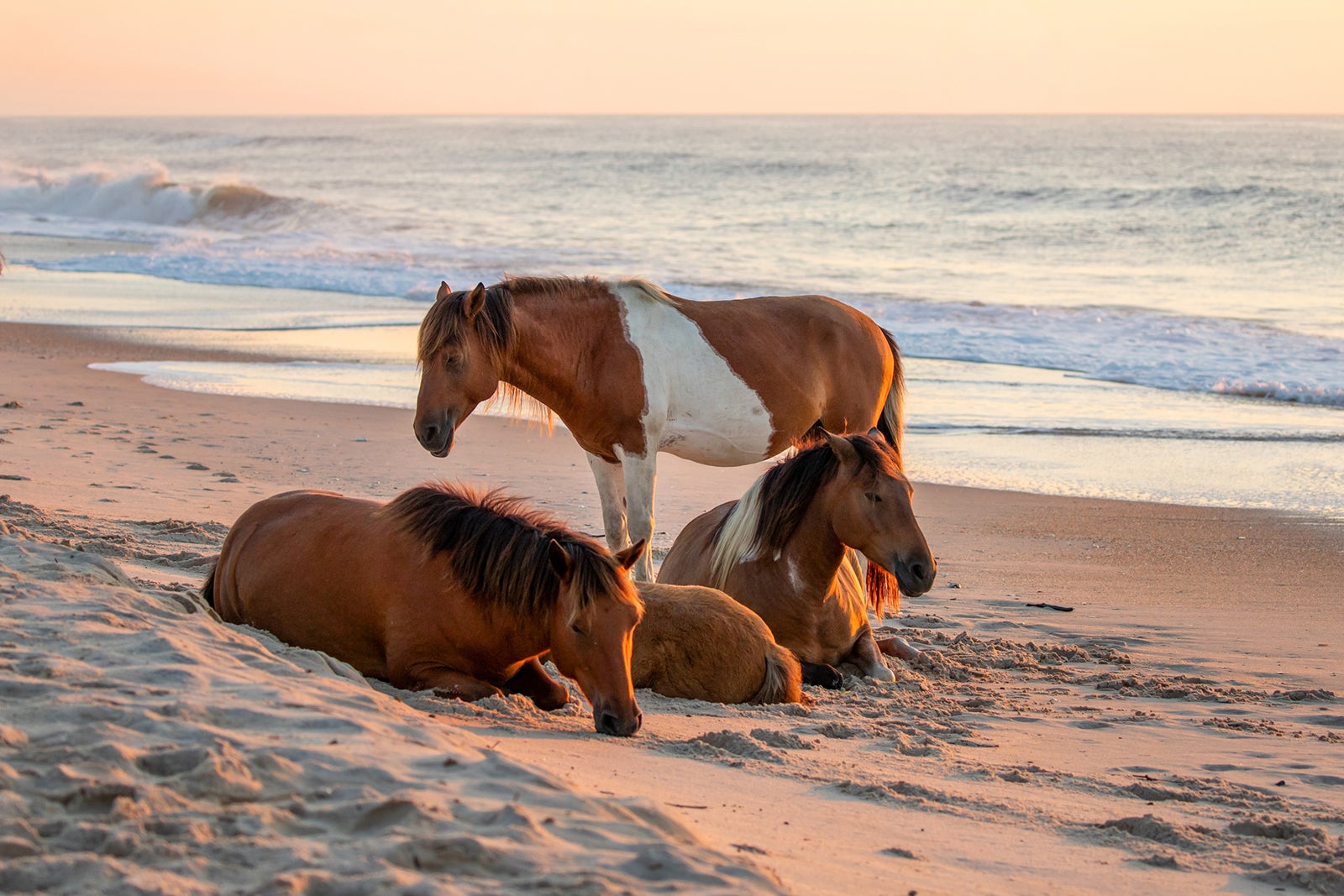
Maryland’s only oceanfront state park, Assateague, is on a barrier island between the Atlantic and the Sinepuxent Bay. The two-mile-long island offers sandy beaches, as well as coves and marshes that visitors can explore by kayak.
Must see: The park’s herd of wild horses, which you can view from a distance. You may spot other animals like deer and waterfowl, too.
Massachusetts—Missouri
Massachusetts: Walden Pond State Park
Fans of Henry David Thoreau’s Walden should visit Walden Pond State Park, home to the famously serene Walden Pond and Walden Woods. It’s ideal for a tranquil escape to contemplate life and its meaning. Visitors can walk or hike along trails circling the pond, swim, relax on the beach, birdwatch or canoe in the pond.
Must see: Thoreau enthusiasts can also visit a replica of Henry David Thoreau’s house.
Michigan: Tahquamenon Falls State Park
Tahquamenon Falls State Park features the emblematic Tahquamenon Falls, which consists of the Upper Falls (50 feet high and 200 feet wide) and the Lower Falls, made up of five smaller waterfalls. Open year-round, the park offers activities like row boating or hiking to the falls in the summer, guided snowshoeing in the winter and strolls to admire the fall’s changing leaves and the blooming wildflowers in spring.
Must see: The River Trail, a four-mile hike that goes past the waterfalls.
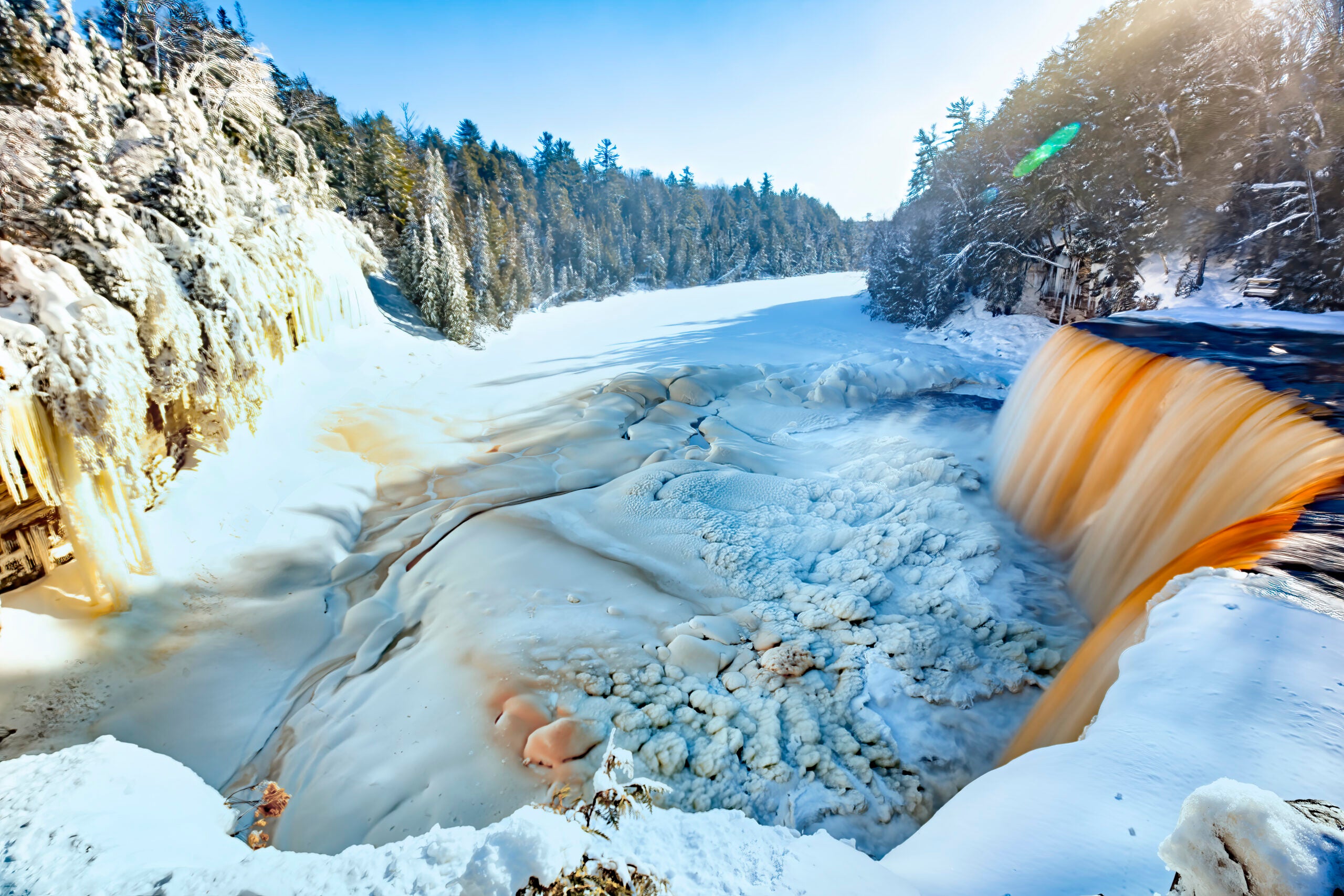
Minnesota: Gooseberry Falls State Park
With myriad waterfalls, a river gorge and 20 miles of hiking trails running through pine, aspen and cedar forests Gooseberry Falls State Park is an invigorating way to enjoy nature in the summer months. Cross-country skiing and snowmobiling in the winter are ideal ways for visitors to take advantage of Minnesota’s heavy snowfall and check out the frozen waterfalls.
Must see: The park’s pebbly Agate Beach to admire the Lake Superior shoreline.
Mississippi: Tishomingo State Park
Drive the historic Natchez Trace Parkway, a road dating back to the 1800s with spectacular scenery, through Tishomingo State Park. Situated at the foot of the Appalachian Mountains, it’s home to unique geological highlights like stone-cut ravines and boulders that are scattered through the park. Park-goers can camp, hike, canoe, fish and picnic at the park — but can only rock climb with a permit.
Must see: The giant rock formations, moss-covered stones and chiseled ravines that line Bear Creek and Haynes Lake.
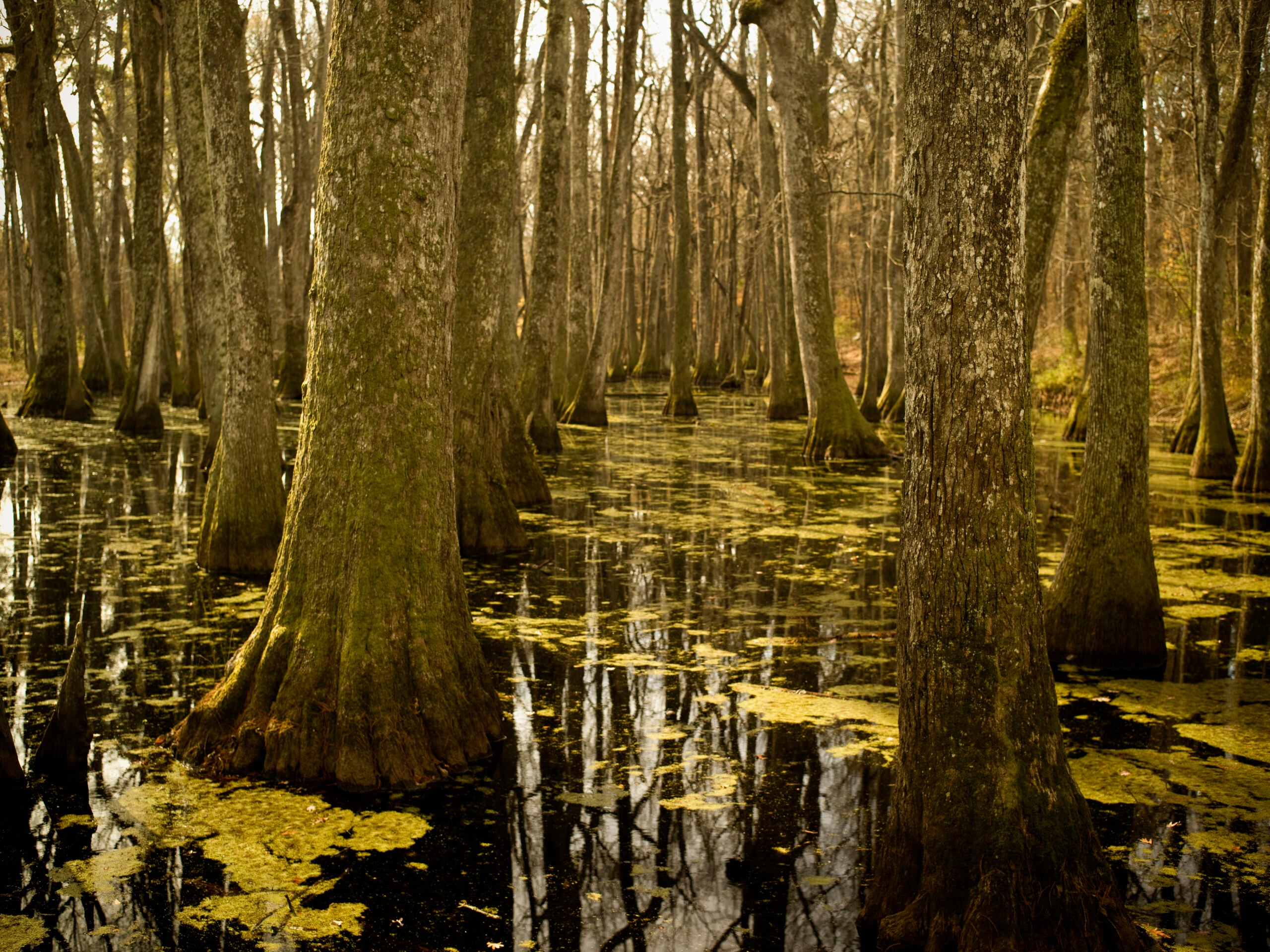
Missouri: Ha Ha Tonka State Park
Ha Ha Tonka State Park might just be one of the most scenic spots in all of Missouri. Between its historic castle ruins, you’ll find 15 miles of trails traversing landscapes that range from caves and sinkholes to karst ravines and lakes where you can hike, fish, boat, picnic and camp. Highlights include the immense Lake of the Ozarks, the blue-tinged water of the Ha Ha Tonka Springs and the Ha Ha Tonka Natural Bridge.
Must see: The Ha Ha Tonka castle — but at your own risk, as it’s allegedly haunted.
Montana—New Jersey
Montana: Lewis and Clark Caverns State Park
While a few different states have a state park named Lewis and Clark, Montana’s oldest state park, Lewis and Clark Caverns, stands out from the rest thanks to its underground limestone caves and caverns. Besides exploring some of the largest caves in the Northwest, visitors can also take advantage of the park’s more than 40 campsites, plus areas apt for fishing and hunting.
Must see: The candle-lit, guided cave tours the park hosts around the holidays.
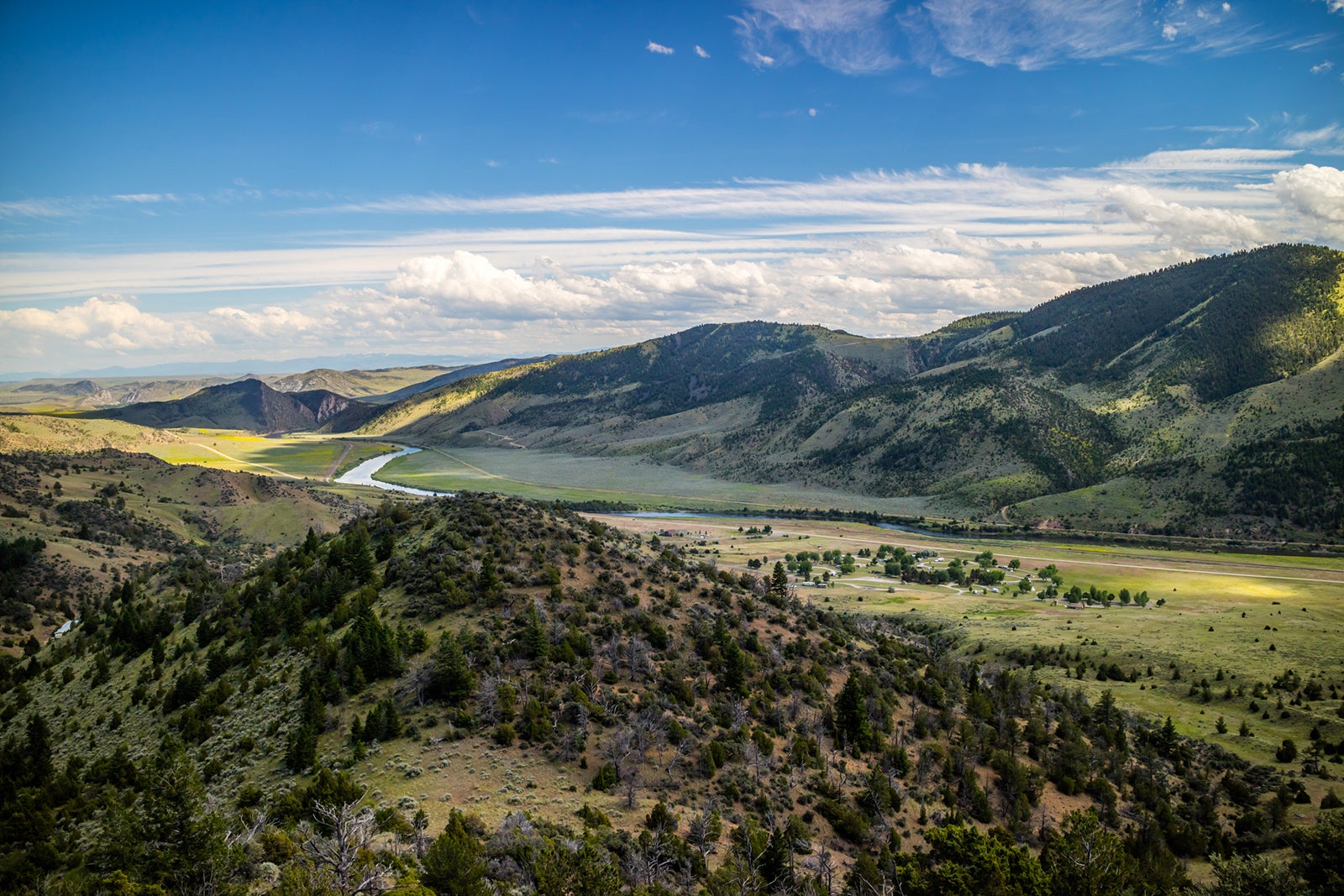
Nebraska: Smith Falls State Park
Nebraska’s newest state park, Smith Falls State Park is where you’ll find the state’s tallest waterfall, Smith Falls, which is over 60 feet high. Besides checking out the falls, park visitors can boat down the Niobrara River. Those who prefer to stay on dry land can hike the Jim MacAllister Nature Trail, camp and fish.
Must see: The park’s best water route, which takes you down the river by tube, canoe or kayak until you reach the Smith Falls Observatory.
Nevada: Valley of Fire State Park
Those looking to trade casinos for nature should head to the Valley of Fire State Park in the Mojave Desert. It’s just a 45-minute drive from the Las Vegas strip. Here you’ll find almost 50,000 acres of massive sandstone rock formations, 2,000-year-old petroglyphs and petrified trees. Learn more about the park and its fascinating landscape at the Visitors Center, or dive right in by hiking or camping.
Must see: The park at dusk — the colorful sunset hues hint at how this state park got its name.
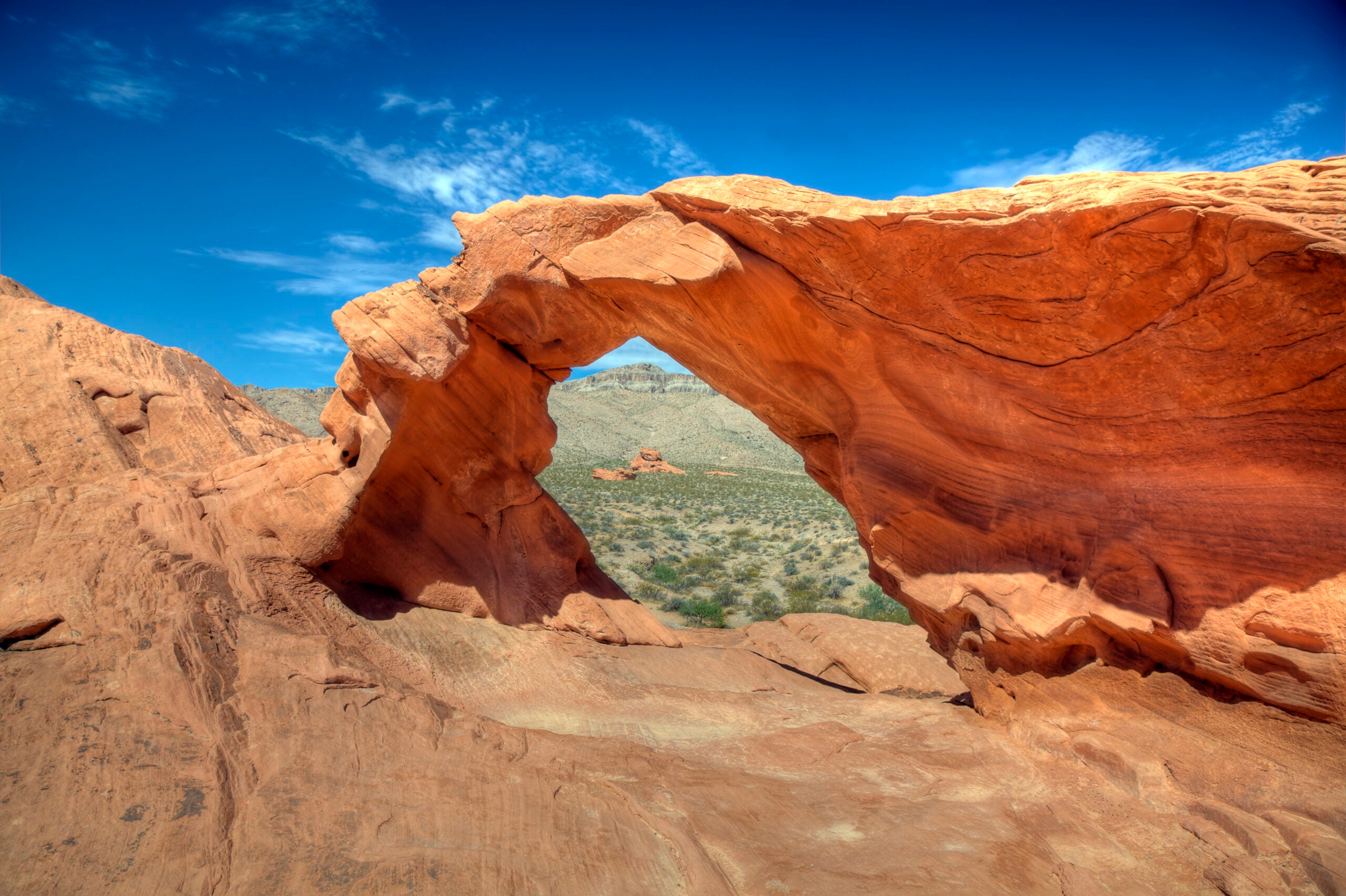
New Hampshire: Cathedral Ledge State Park/Echo Lake State Park
Get two state parks in one when you visit Cathedral Ledge and Echo Lake, which are right next to each other — some consider them all one park. Visitors can hike or climb to the 700-foot-high Cathedral Ledge (there are routes for all levels of difficulty) for stunning views of the White Mountains. Or, you can drive up if you’d prefer to enjoy the views without breaking a sweat. Nearby, you can swim and picnic at Echo Lake.
Must see: The famous White Horse Ledge, a giant granite cliff rock that climbers can attempt to scale at various pitches.
New Jersey: Liberty State Park
A quiet waterfront haven just south of Jersey City, this state park isn’t as rural as most of the other parks on this list. However, it’s worth a visit, especially if you want stunning views of the Hudson River and the New York City skyline, including the 9/11 Memorial & Museum. With miles of walking paths, an outdoor stage and a few picnic and playground spots, a visit to Liberty State Park is a relaxing escape for those who seek a little green without traveling too far away from the Manhattan or other urban spots in the tri-state area.
Must see: The historic Central Railroad of New Jersey Terminal, a train shed dating back to the 1800s, complete with accompanying boxcars.

New Mexico—Ohio
New Mexico: City of Rocks State Park
Just one square mile of one-of-a-kind landscape, the City of Rocks State Park is just as its name suggests — a ‘city’ of giant volcanic stones dating back millions of years, some of which are up to 40 feet high. The rocks form a city, with paths in between them as if they were buildings that suddenly appeared in the middle of the Chihuahua desert. The main attraction is the rocks, but the park also offers camping, hiking, birdwatching and stargazing.
Must see: The park’s desert botanical garden, home to southwestern flora like yucca and various cacti species.
New York: Watkins Glen State Park
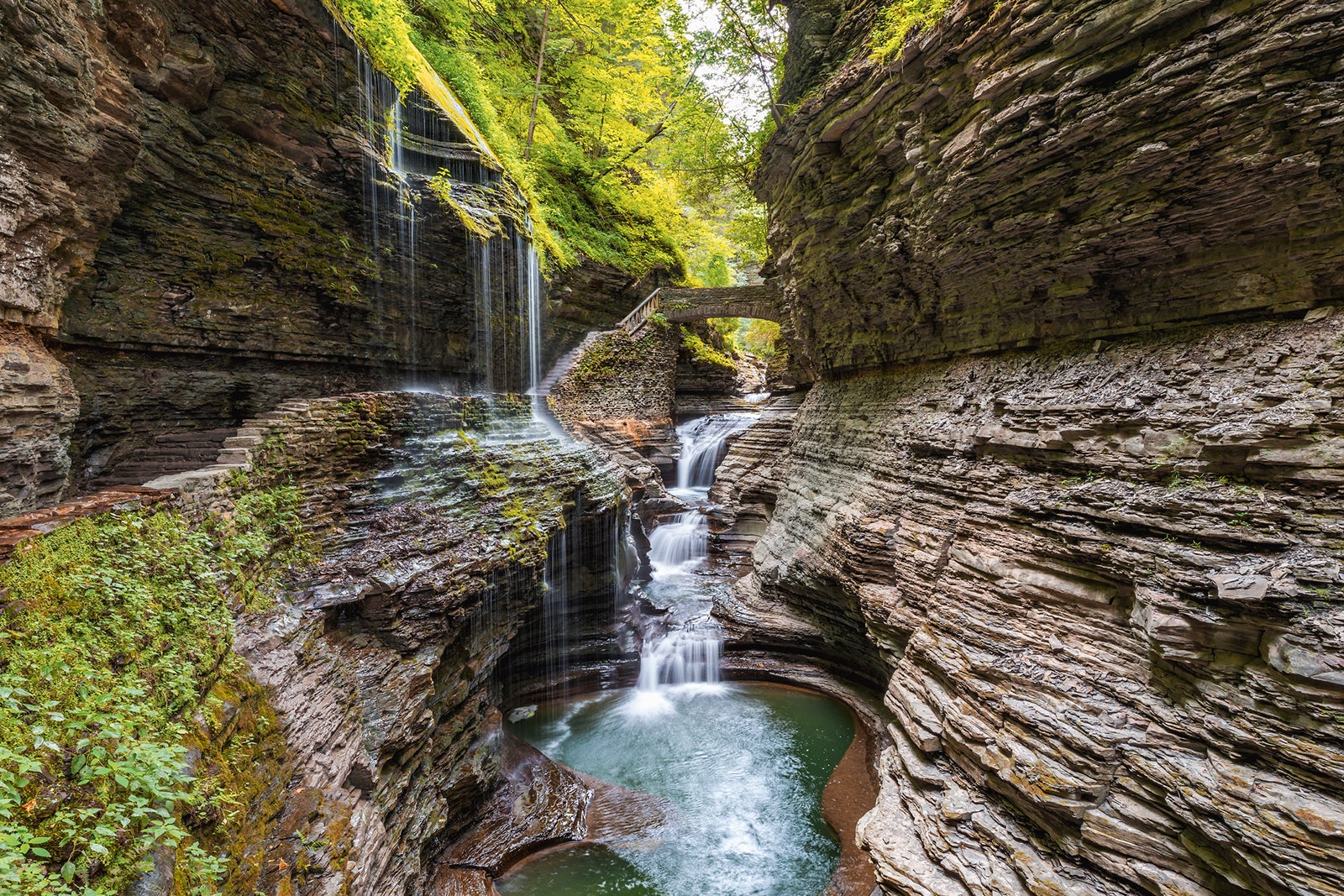
Watkins Glen State Park in New York’s Fingerlakes region features a whopping 19 different waterfalls, plus gorges, campsites, swimming pools and picnic areas. Take a guided tour, or walk or hike through this scenic park on your own.
Must see: The Gorge Trail, which offers access to all 19 of the waterfalls, as well as the Watkins Glen Gorge and Creek — plan about one to two hours for this trek.
Related: These are the best times to visit New York City
North Carolina: Grandfather Mountain State Park
Grandfather Mountain State Park in western North Carolina features 12 miles of hiking trails – from easy strolls to precarious cliff climbs and endurance treks over rugged peaks.
Must see: A visit to the park isn’t complete without a walk across Mile High Swinging Bridge. It’s one of America’s highest pedestrian suspension bridges at an elevation of 5,305 feet (visitors with vertigo might want to skip this attraction). The bridge offers 360-degree vistas of North Carolina’s backcountry.
North Dakota: Little Missouri State Park
With more than 30 miles of trails that run through North Dakota’s Badlands, Little Missouri State Park is an oasis for hikers. It’s also one of the state’s horse parks, meaning there are 81 corrals that riders can use when exploring the park via horseback, as well as designated horse trails (visiting the park by horse incurs an additional fee).
Must see: Bird species native to the Badlands. Keep your eyes peeled for bald eagles, black-billed magpies, Cooper’s hawks, golden eagles, mountain bluebirds, prairie falcons and turkey vultures.
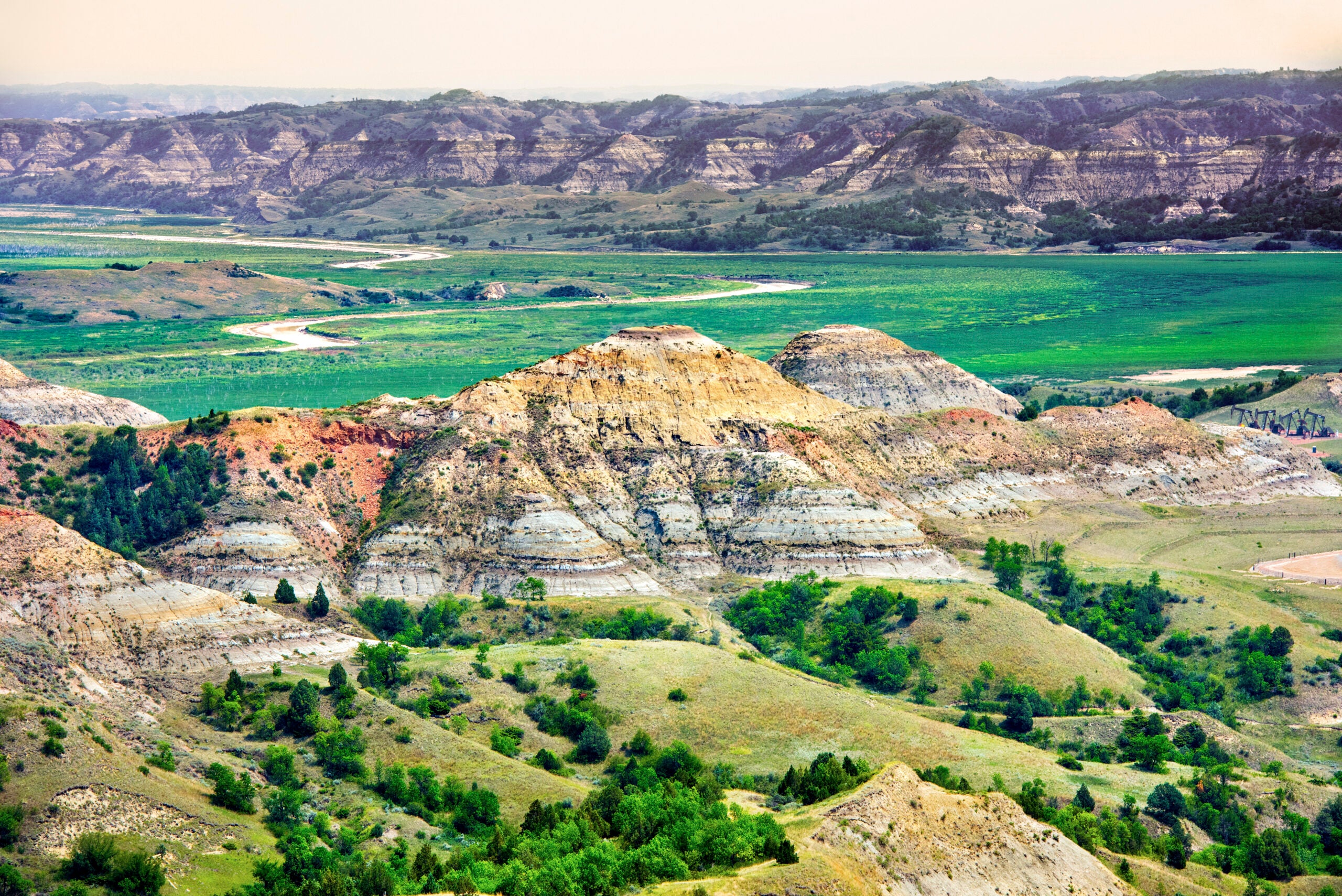
Ohio: Hocking Hills
Hocking Hills State Park is open year-round for visitors to enjoy natural wonders such as waterfalls, caves and sandstone gorges. One of the most famous Hocking Hills landmarks is Old Man’s Cave, a collection of different waterfalls and gorges located along Old Man’s Creek.
Must see: The Grandma Gatewood Trail, a six-mile walking route that connects Old Man’s Cave with some of the other key park attractions like Cedar Falls and Ash Cave.
Oklahoma—South Carolina
Oklahoma: Black Mesa State Park
The 1,600-acre Black Mesa State Park sits on the edge of Oklahoma’s panhandle, where the Rocky Mountains and the shortgrass prairie landscapes converge. Visitors often head to Black Mesa to see wildlife, specifically, the cute prairie dogs that pop out of the brush, but also golden eagles, mule deer and antelope.
Must-see: Lake Carl Etling and its five miles of shoreline, perfect for a refreshing swim or boat ride.
Oregon: Smith Rocks State Park
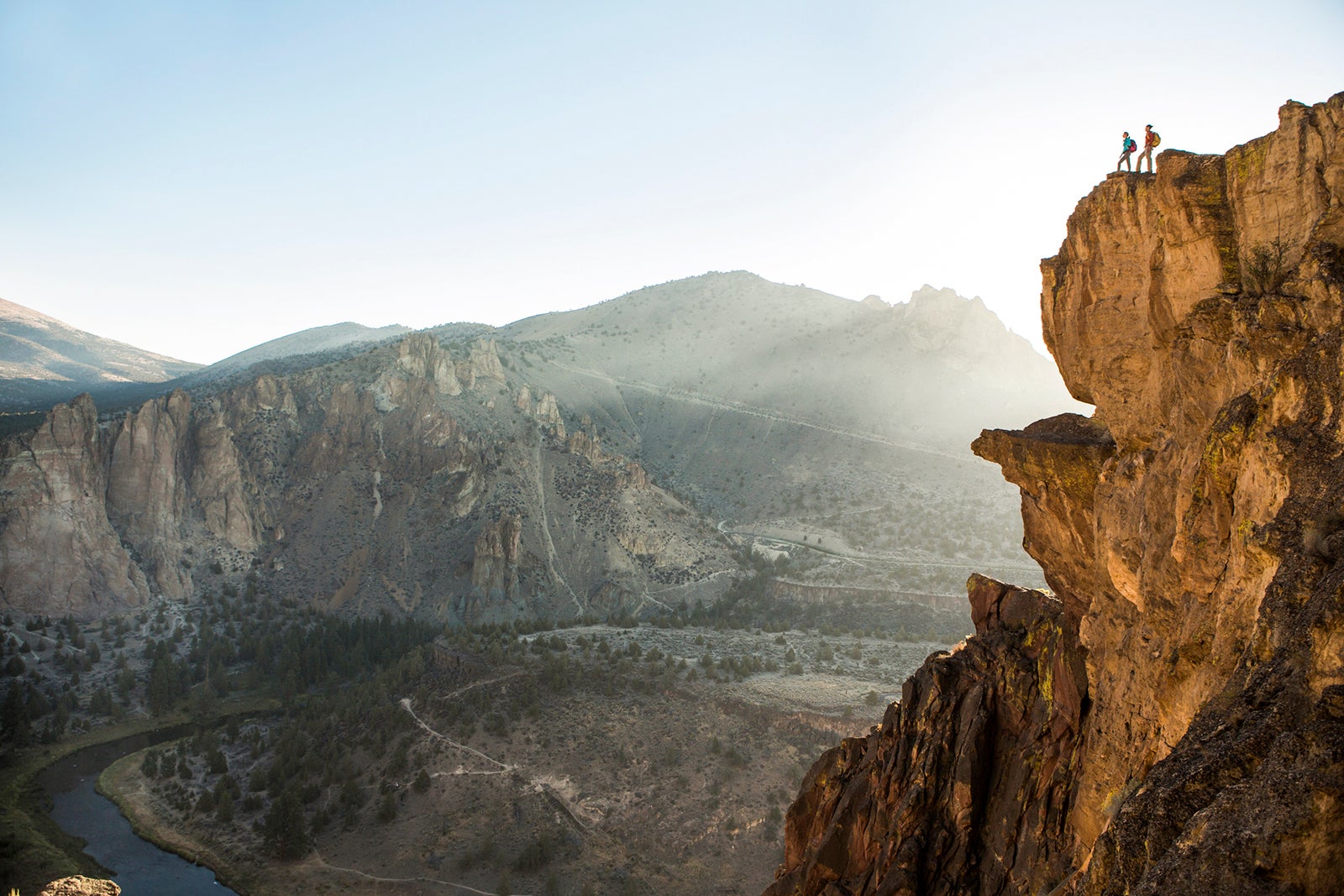
One of Oregon’s 7 Wonders, Smith Rocks State Park has around 2,000 climbs available, ideal for climbers looking for options from beginner to advanced and everything in between. You don’t have to climb to enjoy the magnificent scenery Smith Rocks offers: think craggy basalt peaks, steep tuff ridges and river canyons. Instead, camp in the park or hike one of its most popular trails: Summit Trail or Misery Ridge.
Must-see: Morning Glory Wall, a 350-foot vertical rock wall featuring a number of climbs at various pitches from moderate to challenging.
Related: Why you should plan a wellness trip to the Northwest right now
Pennsylvania: Kinzua Bridge State Park
Kinzua Bridge State Park is home to a monumental landmark: the Kinzua Viaduct, formerly the Kinzua Bridge. The former railroad bridge was damaged in 2003 by a tornado and is now a tourist attraction and scenic viewpoint. The park is ideal for a day trip as visitors can picnic, hunt and hike in the park, which is covered in a rugged, wooded forest, especially beautiful in autumn when the leaves change color.
Must-see: The glass platform, part of the Kinzua Bridge viewpoint, offers vertigo-inducing views of the Kinzua Gorge below.
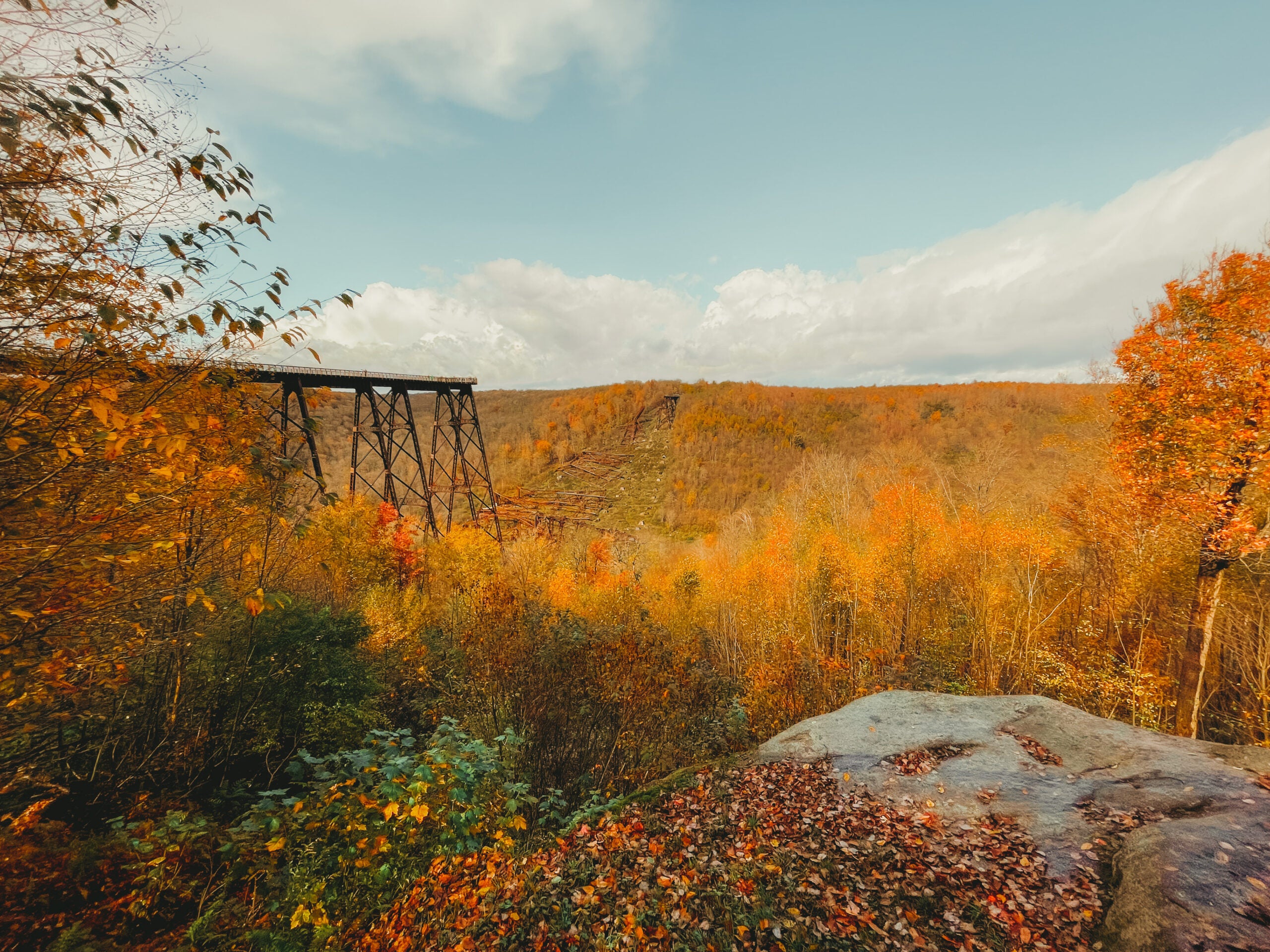
Rhode Island: Colt State Park
Perched on the edge of Narragansett Bay overlooking the water, Colt State Park boasts almost 500 acres of verdant lawn, plus hiking trails and paved paths suited to biking and leisurely strolls. The wide-open lawn space is perfect for an impromptu family game of soccer or frisbee, and kids will love flying kites there, too. Groves and pavilions are also available for picnics.
Must-see: The five-mile Colt State Park Loop is an easy walk that offers beautiful bay views.
South Carolina: Jones Gap State Park
Visitors can enjoy some of the best trout fishing in the state of South Carolina at Jones Gap State Park. The park is where the Middle Saluda River feeds into the Coldbranch Spring. It also features a trout pond and an educational fish hatchery exhibit. Besides fishing, park-goers can hike 60+ trails on the 13,000-acre park space, covered with sprawling mountains and forests, or spend the night at one of 16 different campsites.
Must-see: The park’s two waterfalls, Rainbow Falls (hike there via the Rainbow Falls Trail) and Jones Gap Falls (hike there via the Jones Gap Trail).
South Dakota—Vermont
South Dakota: Custer State Park
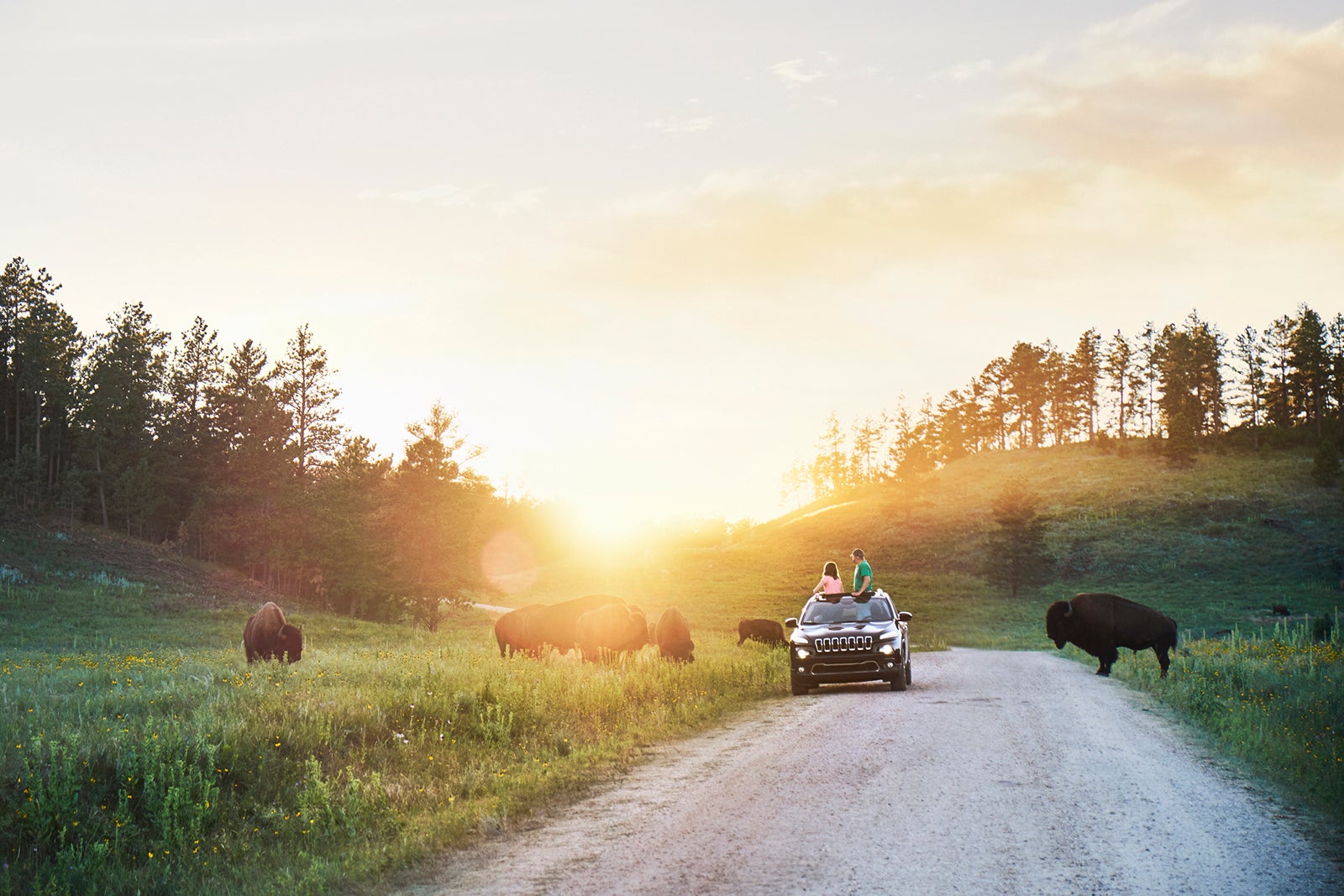
Custer State Park is spread out over 71,000 acres of rocky outcrops through the rolling Black Hills. With nine campgrounds plus hiking, biking, climbing, horse trails and even scenic drive routes, there’s plenty to do on land. There are also various lakes for swimming and SUP.
Must-see: The wildlife — look for around 1,500 bison, as well as wild turkeys, coyotes, elk and mountain goats.
Tennessee: Fall Creek Falls State Park
Explore waterfalls, woodlands and gorges at Fall Creek Falls State Park, located on Tennessee’s eastern Cumberland Plateau. Golfers can enjoy the 18-hole Falls Creek Golf Course. The park also has 56 miles of trails (two of which are overnight trails) plus more than 200 campsites. Fall Creek Falls offers activities for the whole family, including nature education programs and a Canopy Challenge course with zip lines.
Must-see: The famous Fall Creek Falls (256 feet high), as well as waterfalls like Cane Creek Falls, Cane Creek Cascades and Piney Falls.
Texas: Palo Duro Canyon State Park
Home to the second-largest canyon in the U.S., Palo Duro Canyon State Park is located in the Texas panhandle. Hikers can head down 800 feet into the canyon and explore over 15,000 acres of trails. For those who just want to take in the scenery, there are plenty of viewpoints reachable by car. Bikers can also test their mettle via trails spanning varying levels of difficulty. Camping options and horse trails are available, too.
Must-see: The six-mile Lighthouse Trail, which skirts the reddish Lighthouse Rock formation, one of the most famous geological wonders in the park.
Utah: Dead Horse State Park

Similar to Arizona’s Grand Canyon, the Colorado River also passes through Dead Horse Point State Park in Moab, Utah. Here the flowing water has carved out magnificent reddish cliffs up to 2,000 feet high. Explore the desert plateau or mountain bike along one of the many trails. Dead Horse Point also is an International Dark Sky Park perfect for stargazers. The park offers yurts for overnight stays, too.
Must-see: Some (or all) of the park’s eight overlook viewpoints, where you can snap epic photos of the magnificent scenery.
Related: Explore Utah’s national parks
Vermont: Quechee Gorge State Park
Home to Vermont’s deepest gorge, Quechee Gorge State Park also features the Ottauquechee River, which visitors can enjoy from high above thanks to various viewpoints in the park. The park has 45 campsites, as well as picnic areas. Visitors can fish, hike and swim here. Though popular in the summer, Quechee Gorge is especially beautiful in fall when the leaves change color.
Must-see: The visitors center, which is home to one of the park’s best viewpoints over the gorge in an elevated, wooden walkway.
Virginia—Wyoming
Virginia: Natural Bridge State Park
Natural Bridge State Park has one of Virginia’s historic landmarks: the Natural Bridge, a limestone arch within a gorge that’s over 200 feet high. Activities available within the park include fishing, kayaking and canoeing on Mill Creek Lake, as well as hiking or visiting the Nature Center. The park is also an International Dark Sky Park, so those who stay overnight can marvel at the spectacular star-studded sky.
Must see: Visitors can hike to the bridge via the one-mile Cedar Creek Trail which ends at Lace Falls.
Washington: Wenatchee State Park
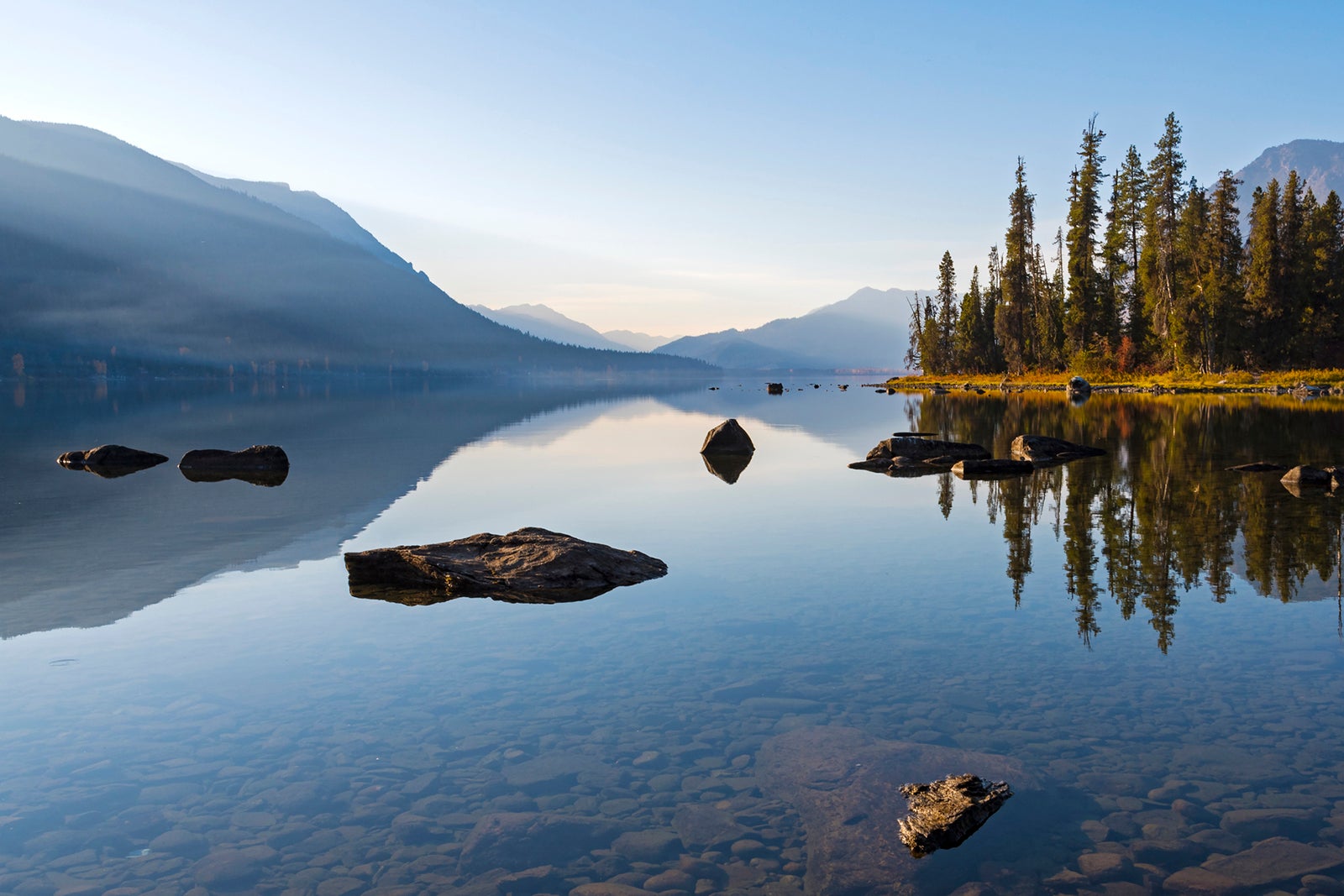
The understated beauty of Wenatchee State Park comes in the form of the pristine, five-mile Wenatchee Lake and Wenatchee River. With hiking trails, biking trails and guided horseback rides that traverse the park’s highland forests and mountains, it’s easy to immerse yourself in nature. Also, camping is available year-round, including snow camping for those brave enough to face the cold temps.
Must see: The lakefront — the lagoon area is perfect for kids, while adults can dip into the refreshing, deeper lake waters, as well as kayak or SUP.
West Virginia: Babcock State Park
With over 4,000 acres of land and 15 hiking trails, Babcock State Park sits along the New River Gorge. The on-site, 19-acre Boley Lake offers activities like fishing, boating and canoeing. Visitors can also bike or hike along various trails in the park.
Must see: The park’s landmark, Glade Creek Grist Mill. The mill is a replica of Cooper’s Mill, the original mill on the grounds, and pays homage to the 500 mills that once stood in Virginia.
Wisconsin: Devils Lake State Park
Just a quick drive away from Madison, Devils Lake State Park is located on native land, home to effigy mounds part of the Ho-Chunk cultural heritage. Today, Devil’s Lake has a couple of sandy beaches, picnic areas complete with barbecue grills and the option to swim or kayak in the boat-free water. There are over 29 hiking trails and 500-foot hike quartzite bluffs that offer views of the park. You can pop over for a day trip or camp overnight at one of over 423 sites.
Must see: The East Bluff Trail is home to landmarks like the impressive Devil’s Doorway and the Elephant Cave.
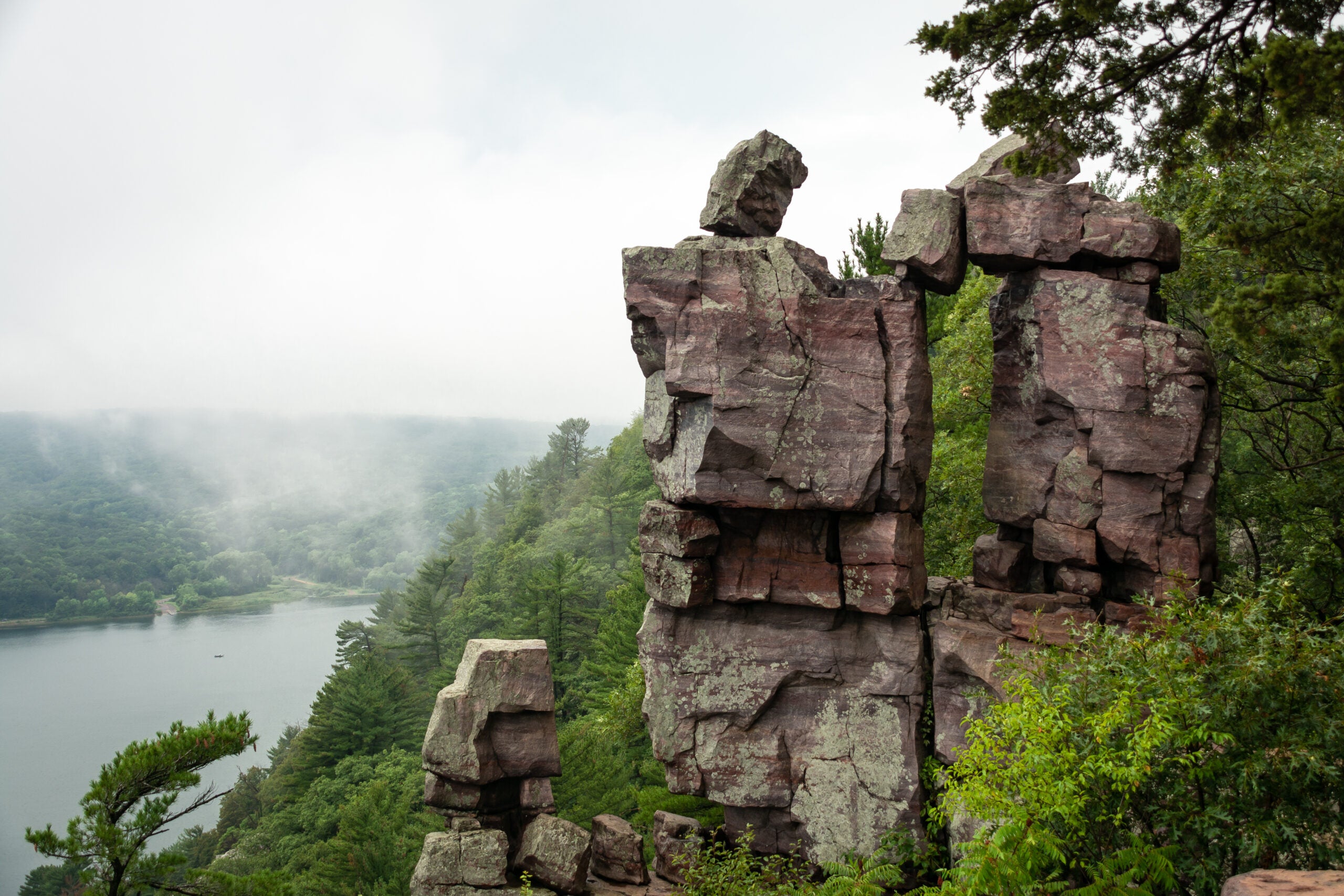
Wyoming: Hot Springs State Park
Anyone looking for thermal healing should visit Hot Springs State Park, where thousands of gallons of hot water flow into the park each day. Visitors can bathe in the mineral water (it’s maintained at 104 degrees) in the free bath house. There are also more than six miles of hiking trails, plus fishing options and picnic shelters.
Must-see: The bison herd, fed by park staff daily to maintain their health in fall and winter at 8:30 a.m. Visitors can watch the bison feeding from their cars.
*Additional reporting by Andrea Rotondo.
Featured photo by Per Breiehagen/Getty Images.
